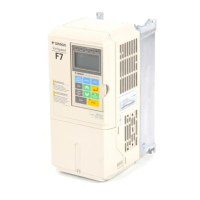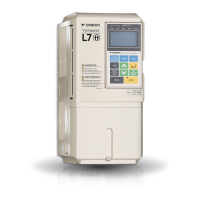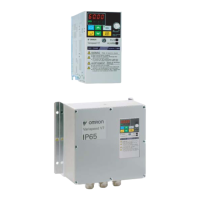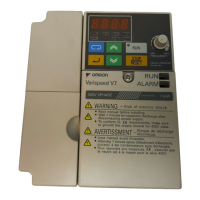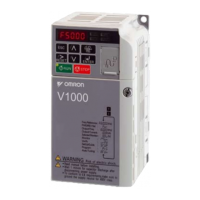Improved Operating Performance
6-27
Improved Operating Performance
This section explains functions for improving motor operating efficiency.
Torque Compensation for Sufficient Torque at Start
and Low-speed Operation
The torque compensation function detects a rising motor load, and increases the output torque.
The inverter calculates the motor primary loss voltage and adjusts the output voltage (V) to compensate insuf-
ficient torque at startup and during low-speed operation. The compensation voltage is calculated as follows:
Motor primary voltage loss × parameter C4-01.
Related Parameters
Adjusting Torque Compensation Gain (C4-01)
Normally, there is no need to change this setting.
Adjust the torque compensation gain under the following circumstances.
• If the cable is very long, increase the set value.
• If the motor capacity is smaller than the Inverter capacity (max. applicable motor capacity), increase the
set value.
• If the motor is vibrating, reduce the set value.
Adjust this parameter so that the output current during low-speed rotation does not exceed the Inverter rated
output current range.
Adjusting the Torque Compensation Primary Delay Time Constant (C4-02)
Set the torque compensation function primary delay in milliseconds.
Normally, there is no need to change this setting. Adjust the parameter under the following circumstances:
• If the motor is vibrating, increase the set value.
• If the motor response is low, decrease the set value.
Parameter
Number
Name
Setting
Range
Factory
Setting
Change
during
Operation
Access
Level
C4-01 Torque compensation gain
0.00 to
2.50
1.00 Yes A
C4-02 Torque compensation delay time constant
0 to
10000
200 msec No A
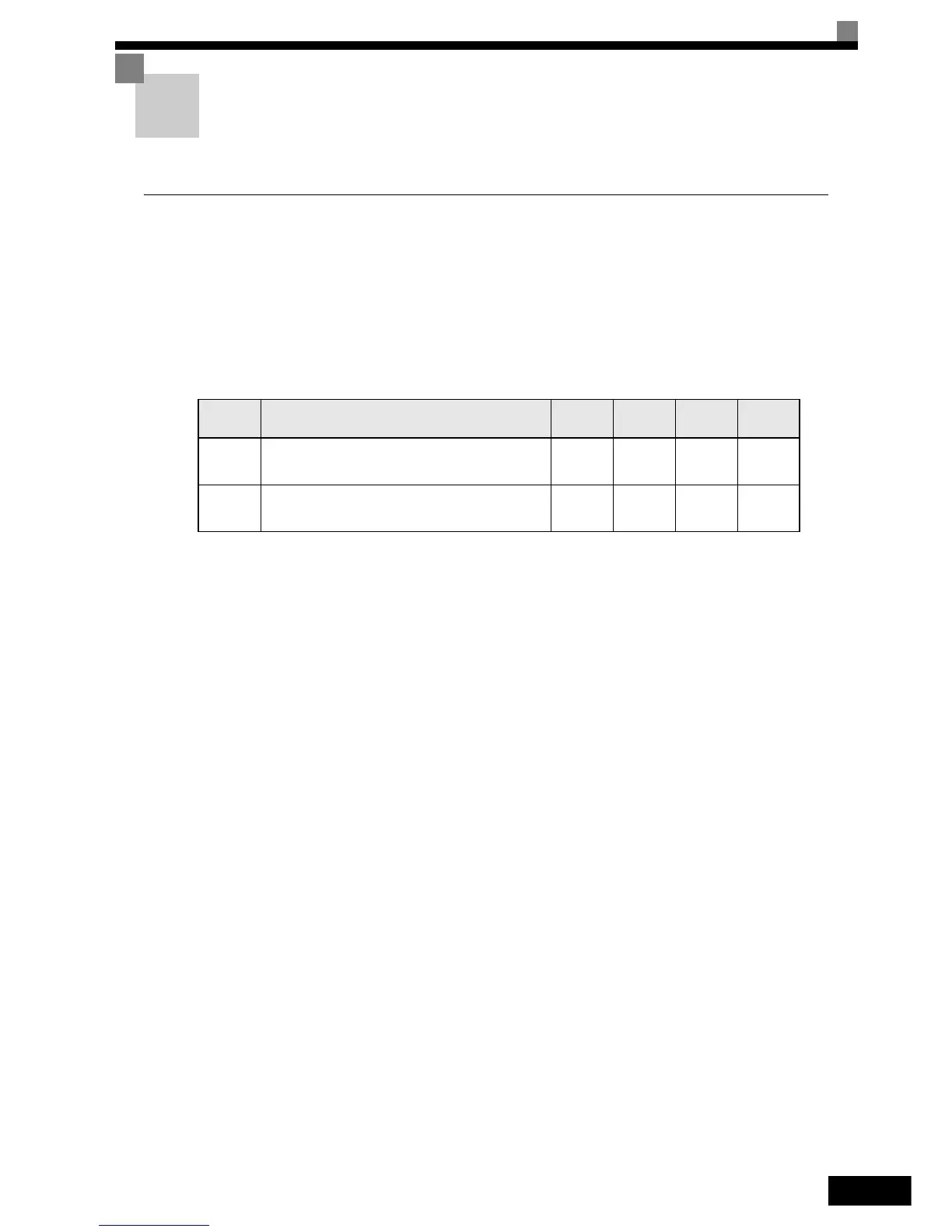